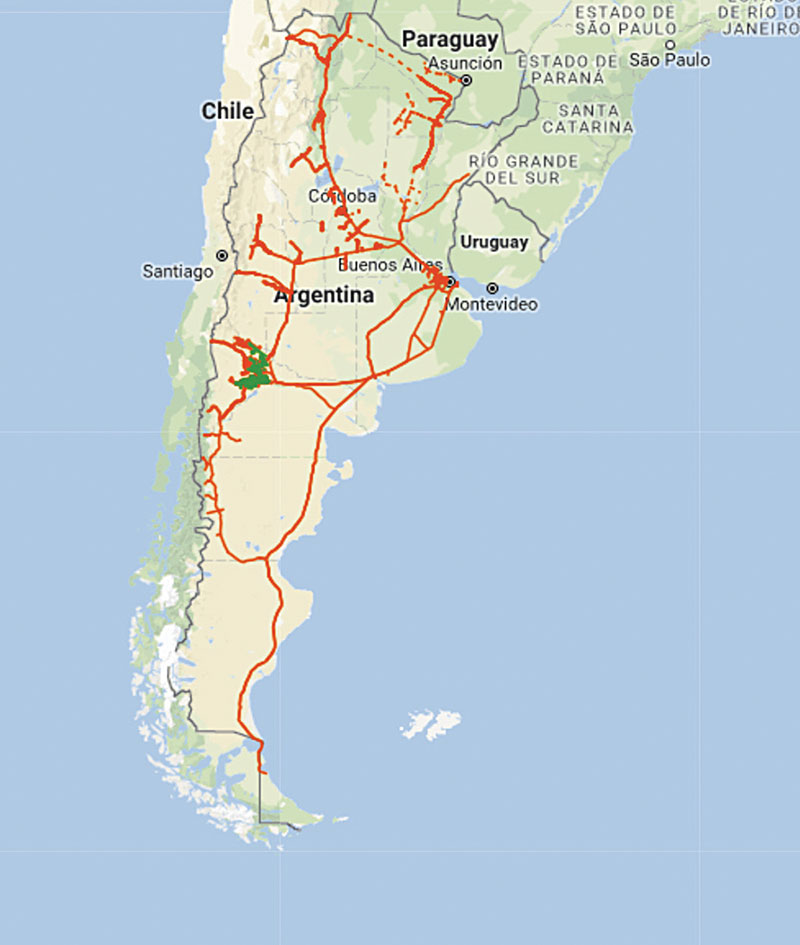June 2018, Vol. 245, No. 6
Features
Argentina’s Vaca Muerta Pipeline to Improve Shale Gas Transport
By Mauro Nogarin, Contributing Editor
In the three years since Mauricio Macri was elected president of the Argentine Republic, the federal government has stepped up efforts to meet unsatisfied gas demand of 40 MMcm/d in winter and increasing year-round demand to fuel an expanding industrial base.
Under business-friendly Macri, Argentina introduced subsidies to encourage investment in unconventional natural gas production from the Neuquen Basin, home to the Vaca Muerta shale play. Regional government is also joining development efforts.

The Province of Neuquén made technical equipment available to the company Transportadora de Gas del Sur S.A. (TGS) to support its evaluation and planning of a new pipeline system that would provide critical transportation infrastructure and provide takeaway capacity for Vaca Muerta shale production.
Those efforts paid off in early April, when TGS officially confirmed that it will invest an initial $250 million on gas transportation infrastructure during 2018-19 in the Vaca Muerta fields.
The first phase of construction will include construction of a conditioning plant and gathering line with initial capacity of 37 MMcm/d and an extension that would allow it to reach 50 MMcm/d – a figure that represents 85% of current production in the entire province. Market sources estimate TGS’ investment will need contracts of over 20 MMcm/d to be repaid.
The pipeline will cross 16 hydrocarbon areas to the connection with the trunk systems in Tratayén, with the following characteristics:
- 57 miles (92 km) of 36-inch gas pipeline
- 37 MMcm/d of transport capacity expandable to 56 MMcm/d
- Work execution time estimated at 17 months
Producing areas in the pipeline’s path include: Bajada de Añelo, Bajo del Choique, La Invernada, Pampa de las Yeguas I and II, Parva Negra Este and Oeste, La Escalonada, Rincon La Ceniza, Los Toldos Norte, South, East and West, La Calera, El Orejano and Sierra Chata.
The system will have the potential to transport gas from 11 of the 26 unconventional concessions that the province has granted so far, and that contemplate investments of $ 7.2 billion in the pilot phase and $142 billion during the 35-year period. It is estimated that these projects will add some 79 MMcm/d of gas during 2025-2032.
In addition to the construction of the gas pipeline, the construction of a conditioning plant that will adapt the quality of the natural gas before entering the main gas pipelines, with 5 MMcm/d initial capacity and adjustment of the dew point of hydrocarbons. It is also planned to include expansion modules, up to 56 MMcm/d.
However, considering the magnitude of natural gas reserves, the Ministry of Energy of Argentina contemplates the expansion of the pipeline and conditioning plant in pace with anticipated development of Vaca Muerta and other areas of the Neuquén Basin.
The total investment estimated for Phase 2 of Vaca Muerta project is about $800 million. The TGV project added to $7 billion investments committed to Argentina’s transportation system in 2017-2021.
TGS is Argentina’s second-largest producer of natural gas liquids and operates about 5,800 miles (9,300 km) of pipelines. It also provides telecommunications services and midstream services.





Comments